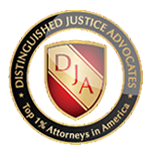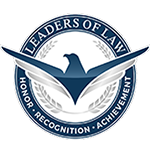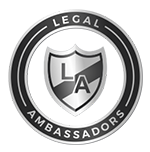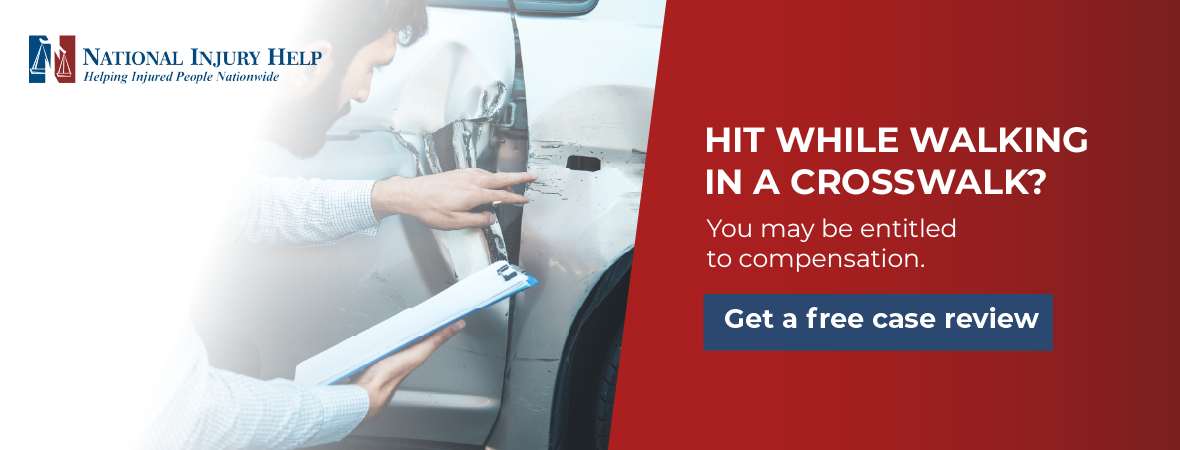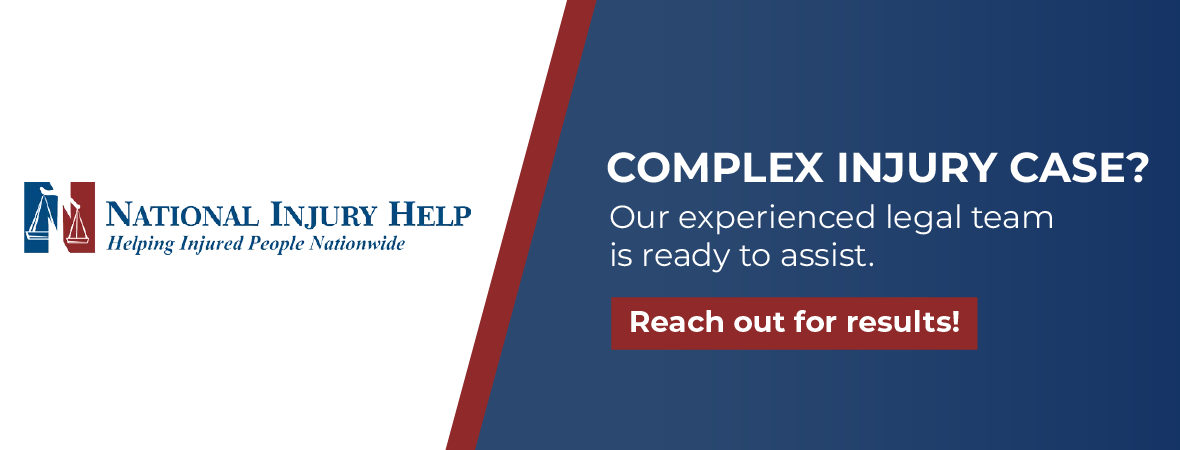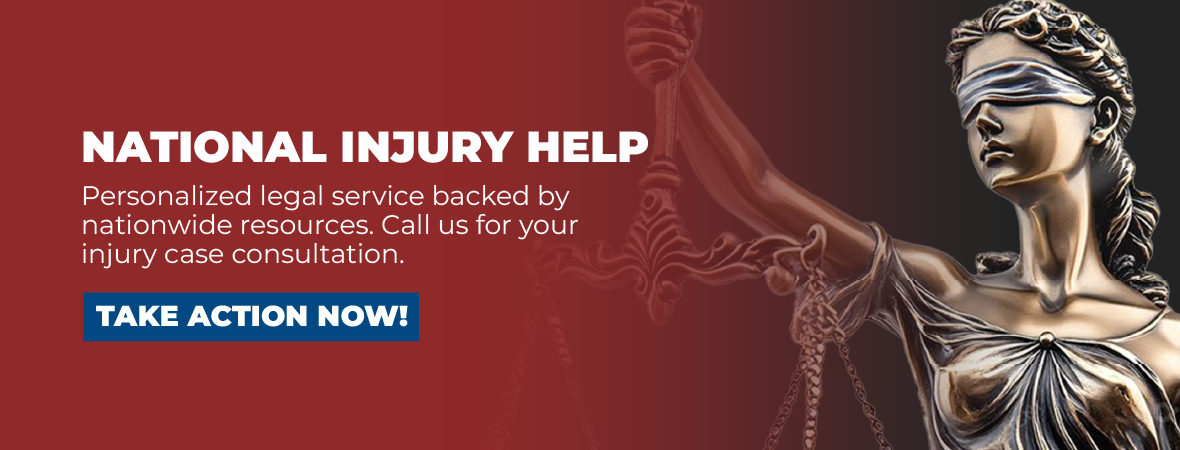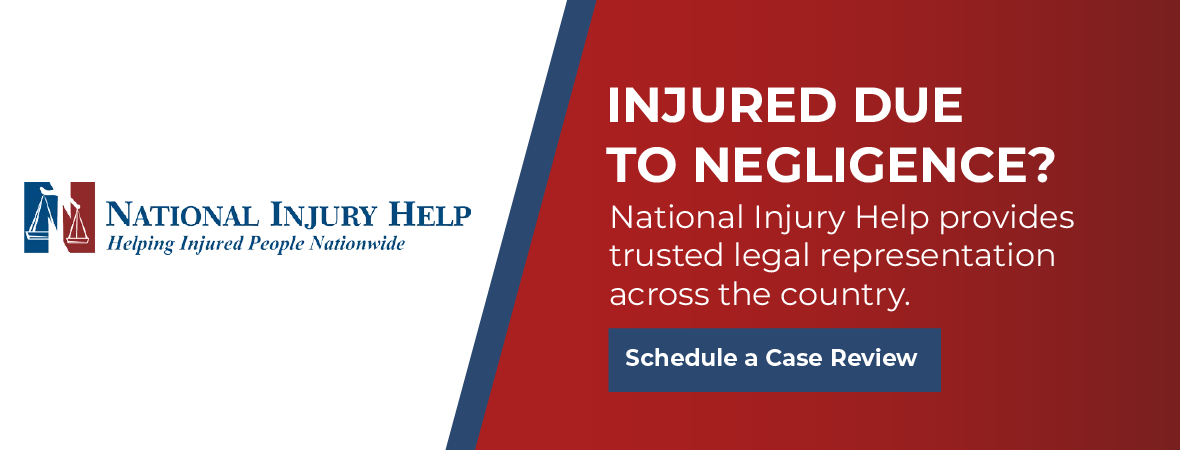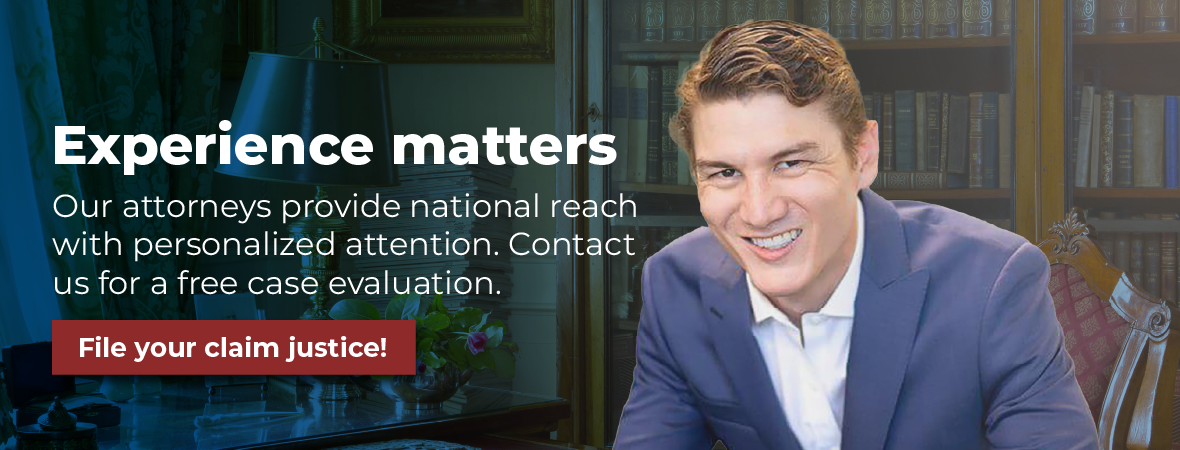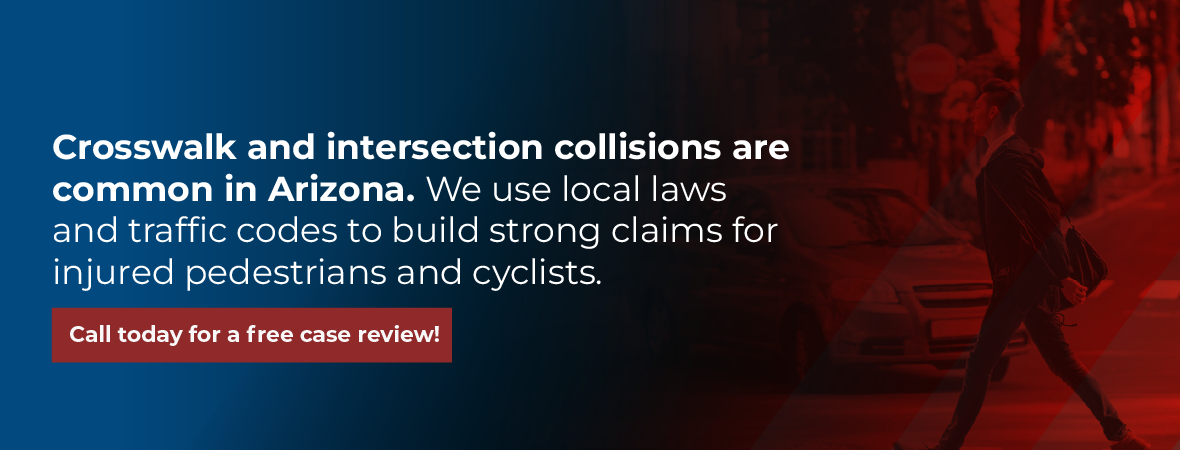Uber and Lyft accidents in Surprise can bring confusing insurance issues and serious injuries. Contact our team of National Injury Help by calling 1 (800) 214-1010.
Rideshare services have become part of daily life in Surprise and across the West Valley. We open an app, watch the little car icon approach, and trust the driver to get us to work, to a spring training game, or Sun Village for a family visit. Most rides finish without trouble, yet accidents still happen at busy intersections like Bell Road and Grand Avenue or on fast-moving stretches of Loop 303.
When a collision involves an Uber or Lyft vehicle, the situation quickly becomes complicated. Multiple policies may come into play, each with different rules depending on whether the app was active, if a passenger was in the vehicle, or if the driver was waiting for a ping. Riders, other drivers, and even the rideshare drivers themselves often feel caught between corporate adjusters and personal insurance agents who cannot agree on who should be responsible for payment.
Arizona law does protect crash victims, but those rights are hard to enforce without clear proof and strong legal pressure. Hospital bills from Banner Del E. Webb Medical Center arrive while you are still sore. Missed work shifts drain a bank account that was already tight. Rideshare companies may send polite emails, while their insurance partners claim someone else should cover the loss.
A Surprise rideshare accident lawyer knows how to untangle that mess, line up the correct policies, and push for full compensation. We are here to handle the legal details while you focus on healing.
Common Rideshare Accident Scenarios According to an Experienced Surprise Rideshare Accident Lawyer
A quick way to understand rideshare crashes is to look at the patterns we see again and again in police reports and medical charts.
Passenger Injured During an Active Ride
Picture riding in the back seat, checking messages while the driver heads south on Reems Road. Traffic slows, the driver looks down at a map, and a rear-end collision snaps your neck forward. Maybe the driver tries to beat a yellow light on Greenway Road, and another car T-bones the rideshare, rolling the vehicle onto its side.
Passengers inside an active ride fall under Uber and Lyft’s highest insurance tier, so coverage can reach one million dollars. Proving that the trip was active is usually simple because the app logs every second, but insurers still challenge the cost of medical care or the length of time you need to miss work.
An attorney gathers trip data, dash-cam footage, and medical opinions to tie every injury directly to the impact.
Hit By a Rideshare Driver While Driving or Walking
Imagine you leave Surprise Community Park on foot, step into the crosswalk, and an Uber rushing to pick up a fare clips your hip. Or you are driving west on Bell Road when a Lyft driver makes an unsafe lane change and sideswipes your SUV.
You were never a rideshare customer, yet the driver’s app status still shapes which policy must respond. If the driver had accepted a ride or had a passenger, the one-million-dollar corporate policy should cover you. If the driver was only waiting for a request, a lower limit applies. Collecting screenshots, witness statements, and phone records helps lock in the correct tier.
Rideshare Driver Injured by Another Motorist
Many drivers work part-time to bring in extra cash, but they often do not realize they have the right to compensation when a careless third party hits them. Suppose you are logged in to Lyft, waiting near the Surprise Stadium pick-up lane, and a speeding commuter rear-ends you.
Your own personal policy may refuse benefits because you were online, yet the rideshare’s uninsured, underinsured, or contingent coverage can step in. A lawyer lines up the policies so drivers do not get stuck paying medical bills out of pocket.
Collisions Involving Uninsured or Underinsured Motorists
Some Arizona drivers still hit the road without enough coverage. If an uninsured car slams into an Uber carrying a paying passenger, the platform’s uninsured and underinsured motorist benefits can reach up to the same million-dollar limit, but only if you prove the at-fault driver truly lacks insurance or that limits are exhausted. Police confirmation letters and written denial notes from the other carrier become key evidence.
Third-Party Negligence
Not every crash is driver error. A drunk motorist may blow through a stop sign, leaving the rideshare no time to avoid a crash. A blown tire caused by a manufacturing defect or a deep pothole left unrepaired on Waddell Road can send any car into a spin.
These outside factors create additional defendants, each with its own insurer. A thorough investigation widens the pool of coverage and raises the ceiling on potential recovery.
Who Is Liable in an Arizona Rideshare Accident?
It’s important to know how liability and insurance actually work under Arizona law.
Arizona Fault-Based Insurance System
Arizona uses a traditional fault model. The driver who causes a crash, or that driver’s insurer, pays for damages. Fault can be shared, and each party pays according to their percentage of blame.
This system already demands careful investigation. Add a rideshare platform, and the picture gets even more layered.
Uber and Lyft Insurance Coverage Explained by Surprise Rideshare Accident Lawyer
Each company divides coverage into three periods. When the app is completely off, only the driver’s personal policy is in play. When the app is on but the driver has not accepted a ride, the company provides limited coverage, typically fifty thousand dollars per person for injuries, up to one hundred thousand per crash, and twenty-five thousand for property damage.
Once the driver accepts a trip or a passenger enters the car, the policy expands to a million dollars in liability and usually the same amount in uninsured and underinsured motorist protection.
Determining Who Pays
Real-world crashes mix personal policies with corporate layers. Suppose a Lyft driver on Grand Avenue, carrying two passengers, runs a red light and hits a family van. Injuries pile up quickly. The passengers claim against Lyft’s million-dollar policy.
Lyft’s insurer may insist the driver’s personal policy covers property damage. If another car forced the Lyft into the intersection, that third driver’s policy enters the mix. Legal counsel reviews declarations pages, coverage letters, and reservation-of-rights notices to sort out overlaps and gaps.
Why Liability Is More Complicated in Rideshare Crashes
Uber and Lyft call drivers independent contractors, not employees. That wording lets the platforms argue they are not directly liable for negligent driving. They still provide insurance, but their adjusters often aim to shift as much blame as possible onto the individual driver or a third party.
At the same time, the driver’s personal insurer may deny a claim because most personal policies exclude commercial activities. Stuck between two insurers, victims need a lawyer who can apply policy language, state statutes, and case law to push both companies toward a full payout.
Surprise Rideshare Accident Lawyer Explains Steps to Take After a Rideshare Accident in Surprise
After a rideshare crash, you may feel dizzy, angry, or simply overwhelmed. A simple checklist can turn that chaos into a controlled response.
Call 911 and Report the Crash
The first step is safety. Move to a secure location if you can, then call emergency services. Ask for police and medical responders. A formal police report records positions, statements, and initial fault assessments. That record carries weight with insurers who try to rewrite the story later.
Get Medical Care Immediately
Even if you only feel shaken, get a medical exam. Concussions, soft-tissue injuries, and internal bleeding can hide beneath adrenaline. Banner Del E. Webb Medical Center and West Valley urgent care clinics can perform imaging studies and begin treatment immediately. Medical records created on the crash date link injuries directly to the event with no doubt.
Take Photos and Gather Information
Use your phone camera to document license plates, damage points, skid marks, street signs, and weather. Capture the rideshare driver’s profile screen and the trip page that shows the ride status. Ask witnesses for names and numbers. Quick photos preserve evidence that tow trucks and sweeping crews remove within an hour.
Don’t Accept Quick Settlement Offers
Within a few days, you might get a courteous call from a corporate adjuster offering quick money. Early offers rarely cover all medical expenses, future rehab, or lost wages. Signing release papers closes the door on later recovery. Politely decline and mention you will respond after legal review.
Contact a Rideshare Accident Lawyer
App-based cases move on digital proof that can vanish if no one preserves it. A lawyer sends letters to Uber or Lyft demanding that GPS logs, phone use data, and dash-cam footage remain intact. Early legal help also means someone else answers insurer calls while you focus on healing.
How a Surprise Rideshare Accident Attorney Helps
Once you hire an attorney, their main job is to gather facts, assign blame, and turn your real losses into clear dollar amounts that insurers must respect.
Investigating the Accident Thoroughly
Attorneys start with the basics: police reports, witness statements, and vehicle damage photos. They go further by sending subpoenas for app data that show when the driver accepted the ride, how fast the car moved, and whether the driver swerved before impact.
Phone logs reveal if a call or text distracted the driver. GPS traces map the vehicle’s path second by second, proving speed and lane position. Dash-cam footage from either car can erase disputes about light color or lane changes.
Identifying All Liable Parties
A single crash might involve the rideshare driver, another motorist, a trucking company that lost debris onto the road, or a city agency that failed to fix a broken traffic light.
An attorney reviews photos for tire marks pointing to a hit-and-run vehicle, checks recall databases for brake defects, and consults road engineers about dangerous intersection design. Each new defendant adds another insurance policy that can pay damages.
Calculating Your Damages
Medical bills are just the starting point. Lawyers collect future treatment estimates from surgeons, physical therapists, and psychologists. They gather wage statements and work with vocational experts who measure how injuries limit career paths.
For pain and suffering, you can get therapy notes and family statements about daily struggles. Detailed math converts those losses into a demand that covers both current and future needs.
Handling Communication With Multiple Insurers
One insurance adjuster might handle Uber’s liability, another Lyft’s underinsured coverage, and a third the driver’s personal policy. Each asks for records in different formats and on different timelines. Your attorney coordinates responses, meets deadlines, and tracks every letter so no carrier can claim you ignored requests.
Filing a Lawsuit in Maricopa County if Needed
Most cases settle through negotiation, but some require a lawsuit to force serious offers. Filing suit allows discovery. Lawyers depose drivers, company safety managers, and app engineers who can explain system alerts that the driver may have ignored.
Trial readiness often moves insurers to raise settlements, yet your attorney prepares to present medical experts, economic charts, and accident reconstructions in front of a jury if no fair number arrives.
Types of Compensation Our Team of Experienced Surprise Rideshare Accident Lawyers Can Secure for Victims
Experiencing a crash while riding in an Uber or Lyft can turn your life upside down. The physical, emotional, and financial toll can be overwhelming. While no amount of money can undo the trauma, Arizona law allows victims to pursue compensation across several categories. Understanding what you’re entitled to recover helps you prepare and protects your future.
Economic Damages
Economic damages refer to tangible, out-of-pocket expenses that are supported by bills, receipts, and documentation. These damages are often the first and most straightforward component of a personal injury claim.
Medical Expenses
This includes everything from ambulance rides and emergency room visits to surgeries, hospital stays, physical therapy, prescriptions, and follow-up care. Medical equipment such as wheelchairs, crutches, braces, or custom orthotics is also reimbursable.
If you have to travel for specialized treatment, whether it’s mileage, meals, hotel stays, or parking, those costs count too. Future medical expenses are also recoverable, provided that a physician has tied them directly to the injuries and has supplied estimates in writing.
Lost Wages
Time away from work translates to lost income. Pay stubs, direct deposit records, and employer letters help calculate this figure. If you are salaried or work on commission, your lawyer can account for those variables. Used vacation days, paid time off, or lost contract work should all be part of your demand.
Loss of Earning Capacity
In more serious cases, your injuries might prevent you from returning to the same job or reduce your ability to earn a similar income in the future. Economists are brought in to compare your previous earning potential with your new limitations.
If you worked in a physically demanding role and now can’t lift more than ten pounds or stand for long, this financial gap could last for years, or even the rest of your career.
Property Damage
While rideshare passengers are less likely to experience property damage to their own vehicle, there are still situations where losses occur.
Vehicle Damage
If you were driving your own car and got struck by a rideshare driver, you may be able to recover the cost of repairs or replacement. Total loss vehicles are reimbursed based on fair market value at the time of the crash, not the original purchase price.
Damage to Personal Belongings
Items damaged in the crash, such as cell phones, laptops, jewelry, eyeglasses, medical devices, or children’s car seats, are also included. Providing receipts, warranties, or repair estimates strengthens your claim.
Transportation and Rental Costs
If your vehicle is out of commission, rental costs, rideshare fees, or public transportation expenses related to your injury or case may also be recoverable.
Non-Economic Damages
While economic damages cover your financial losses, non-economic damages compensate for the emotional and physical impact of your injuries. These losses are just as real, even though they are harder to measure with receipts.
Pain and Suffering
This category accounts for the physical discomfort and agony resulting from your injuries. This might include broken bones, headaches, nerve pain, or muscle spasms. Your daily routine may be disrupted, with basic tasks becoming painful or impossible. Medical records, pain diaries, and physician notes all support these claims.
Emotional Distress
Beyond physical pain, the emotional toll can be severe. Many rideshare accident victims develop post-traumatic stress disorder, anxiety, or depression. You might find yourself afraid to ride in a car, unable to sleep, or constantly reliving the event. Documentation from mental health professionals, including psychologists or licensed therapists, can be critical in proving this type of damage.
Loss of Enjoyment of Life
If you previously enjoyed biking, hiking, playing with your children, or participating in social activities but can no longer do so, you may be compensated for the loss of enjoyment. These activities form part of your identity, and the inability to engage in them carries legal value.
Punitive Damages
In rare but serious cases, Arizona courts may award punitive damages. Unlike other forms of compensation, these damages are not intended to repay the victim but to punish the defendant and deter similar behavior.
Punitive damages may be awarded if:
- The rideshare driver was driving under the influence
- The driver was street racing or driving aggressively
- A vehicle defect was known and ignored by the company
- A history of complaints or prior incidents was disregarded by the platform
Punitive damages are typically awarded in trial rather than settlement, and they require strong, clear evidence of reckless or intentional misconduct.
FAQs About Uber and Lyft Accidents in Surprise, Arizona
If you’re involved in a Lyft crash in Surprise, understanding how liability and insurance coverage work can help you make informed decisions. Below are answers to common questions about Uber and Lyft accidents.
Does Uber or Lyft pay for passenger injuries?
Yes. When a ride is in progress, meaning the driver has accepted a trip or a passenger is in the vehicle, Uber and Lyft provide a $1 million liability insurance policy. This policy can cover medical expenses, lost income, and pain and suffering for injured passengers.
What if the rideshare driver wasn’t at fault?
You may file a claim against the other driver’s insurance policy. If that driver is uninsured or underinsured, Uber or Lyft’s uninsured/underinsured motorist coverage may cover your damages, provided the rideshare app was active and the trip had started or was ongoing.
Can you sue both Uber / Lyft and the driver?
Yes, you can pursue claims against multiple parties. Most cases focus on insurance coverage rather than suing Uber or Lyft directly. However, in some situations, like negligent hiring or failure to remove a dangerous driver, direct claims against the company might be possible. The more common route is to file against the driver and access the rideshare company’s insurance.
Do you still have a case if the app was off?
Yes, but it changes the insurance scenario. If the rideshare driver’s app was off, the incident would be treated like any other private car accident. Only the driver’s personal auto insurance would apply. If there’s a dispute about whether the app was on, the rideshare company data can confirm the exact time and status.
How long do you have to file a rideshare accident claim in Arizona?
Generally, Arizona law gives you two years from the date of the accident to file a lawsuit. However, if the crash involves a government vehicle, a poorly maintained road, or a faulty traffic signal, notice of claim deadlines can shorten that window to as little as 180 days, so early legal advice is essential.
Contact a Surprise Rideshare Accident Lawyer
Being involved in a rideshare accident can leave you shaken, injured, and overwhelmed. Whether you were a passenger in an Uber or Lyft, a pedestrian hit by a rideshare vehicle, or another driver affected by a rideshare crash, the legal process can be confusing. Multiple insurance policies may be involved, and each company will try to limit what it pays.
At National Injury Help, we know how to cut through the confusion. Our team understands how rideshare platforms operate and what evidence is needed to prove fault. We gather trip data, GPS logs, dashcam footage, and witness statements to build a strong case from day one. We act quickly to protect your rights and make sure no critical information is lost.
If you were injured in a rideshare accident in Surprise, Arizona, now is the time to take action. The sooner we get involved, the more we can do to secure evidence, communicate with the insurance companies, and fight for the full compensation you need to recover.
We offer free consultations and charge nothing unless we win your case. You do not have to deal with the stress of medical bills, lost wages, or legal paperwork alone. Let us step in and handle the hard part while you focus on getting better.
Call 1 (800) 214-1010 today to speak with a Surprise Uber accident attorney who is ready to fight for your recovery.

